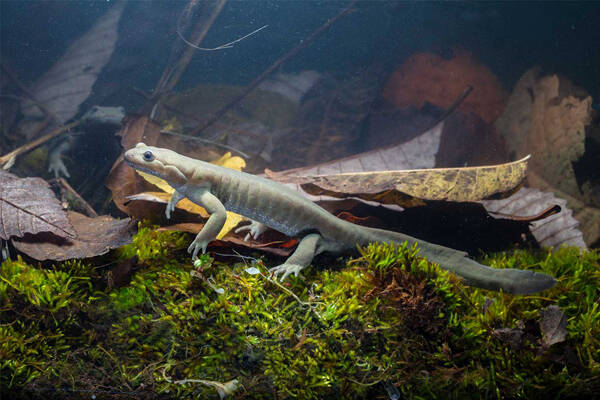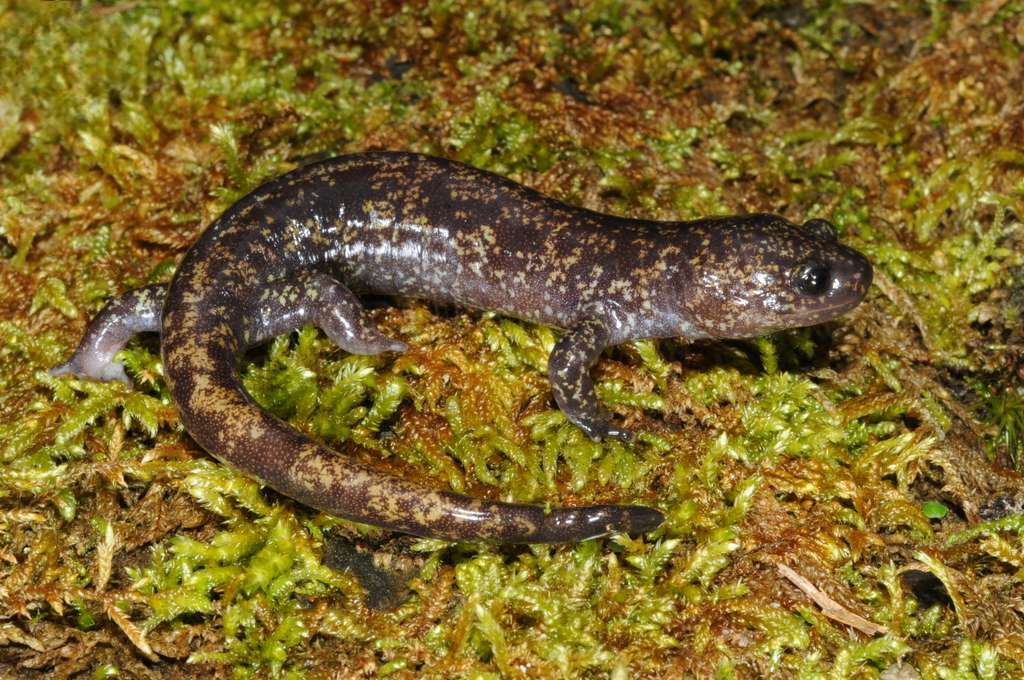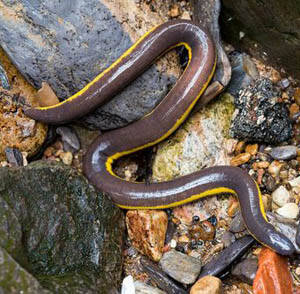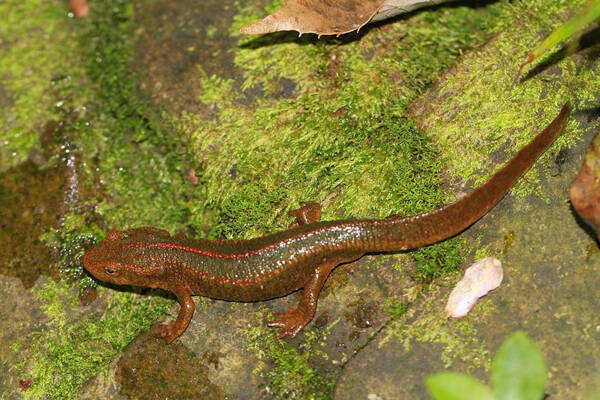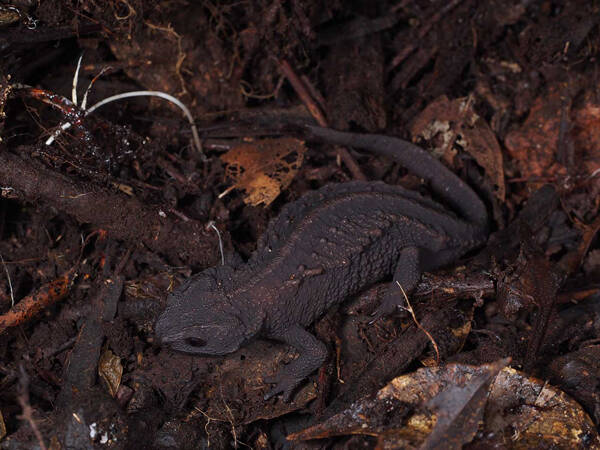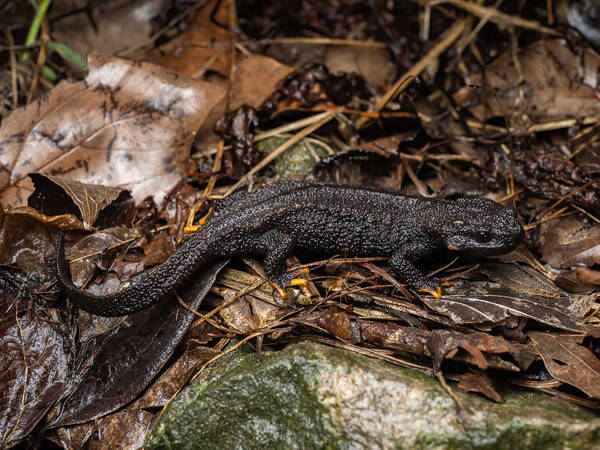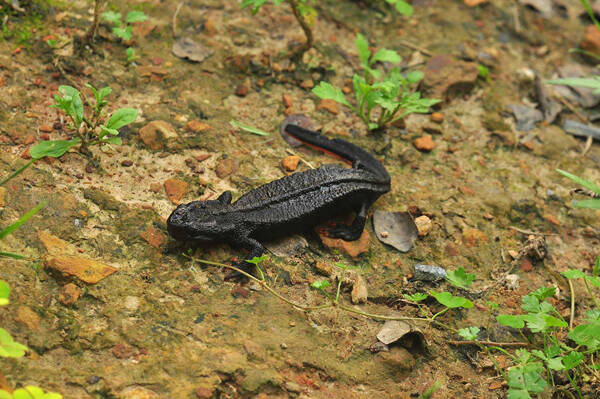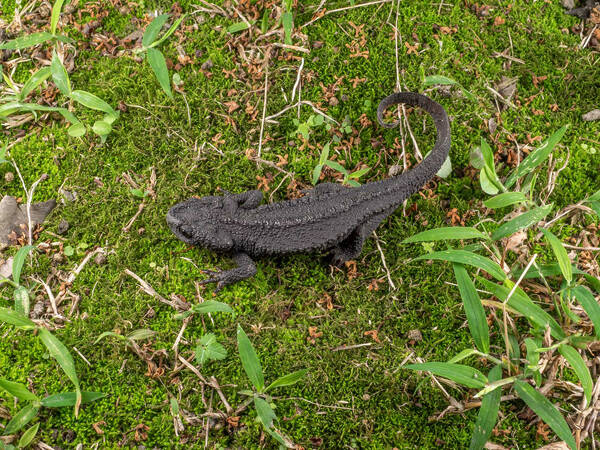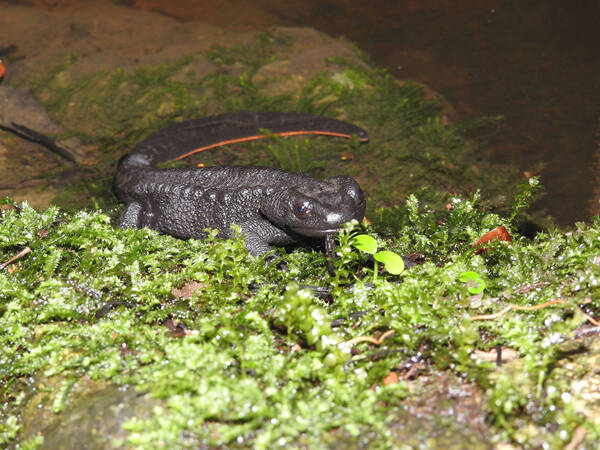Hynobius chinensis
IUCN
LCBasic Information
Scientific classification
- name:Hynobius chinensis
- Scientific Name:Hynobius chinensis,Chinese Salamander
- Outline:Urodela
- Family:Caudata Hynobiidae Hynobiidae
Vital signs
- length:165-205mm
- Weight:
- lifetime:
Feature
The head is relatively large, with the length of the head being greater than its width, and the back of the body and tail is almost uniformly black or brown-black.
Distribution and Habitat
Endemic to China, distributed in Hubei (Changyang).
Lives in mountainous areas at an altitude of 1400-1500m.
Appearance
The head is relatively large, with the length of the head greater than the width; the snout is rounded, without lip folds; without fontanelles, and the vomerine tooth row is V-shaped. The trunk is relatively short and strong, the base of the tail is slightly rounded, and gradually flattens laterally to the end of the tail, with no dorsal or ventral muffled folds or very weak ones, and the end of the tail of some individuals is blade-shaped.
Details
The Chinese salamander (scientific name: Hynobius chinensis) is an animal of the Hynobiidae family and the genus Hynobius. It is an ancient species dating back 300 million years and developed in the same era as dinosaurs. In 1889, a foreigner named Günther first discovered it in Xuanchang, Hubei, and named it "Chinese salamander". It is a precious "living fossil" and is known as the "golden key" to studying the history of paleontological evolution.
Adult salamanders mostly live in secondary forests, weeds and shrubs with lush vegetation near ponds in mountain depressions. Adult salamanders mostly live on land. They breathe by exchanging air through their lungs and moist skin. They usually live near water sources and feed on mosses or arthropod larvae.
They mate and lay eggs in ponds in November and December every year. The egg sacs sink to the bottom of the water in pairs, forming a "C" shape. The egg sacs are about 250 mm long and 100 mm in diameter. Each pair of egg sacs contains 60-80 eggs. The breeding waters are clear, with a pH of 7. The ponds are 5-30 cm deep, and the egg sacs are mostly laid at a depth of about 10 cm. The egg group is incubated and raised indoors for four months, and the subadults are about 55 mm in length.
The main threat to the Chinese salamander is habitat destruction and degradation, especially due to the development of infrastructure in human residential areas.
In February 2021, the newly adjusted "National Key Protected Wildlife List" was announced, and the Chinese salamander was upgraded to the national first level.
